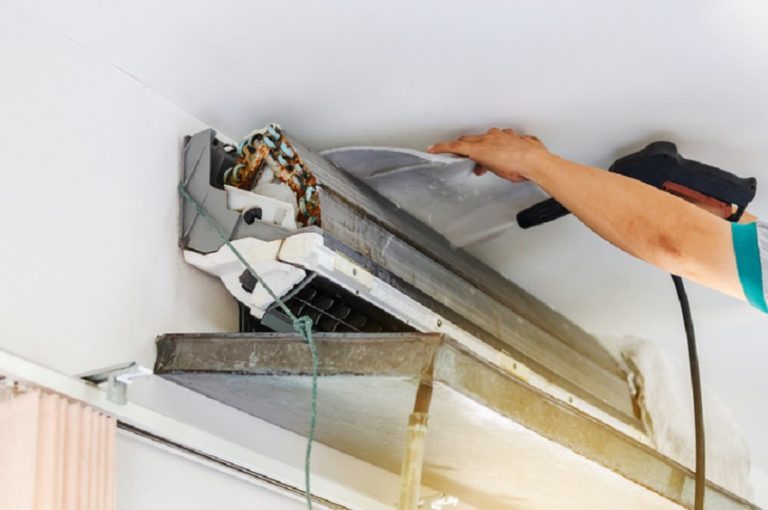Mold can decrease the quality of air to a great extent. If you are sensitive to mold, touching or inhaling mold spores can cause runny nose, sneezing, coughing, skin rash, headache, sore throat, and eye irritation.
People with severe mold allergies can suffer from shortness of breath. Mold growing in the basement or bathroom is trouble enough, but what to do when mold forms inside your air conditioner or the ducts of the HVAC system?
This post offers useful insights on how to deal with mold inside your air conditioning unit and prevent future problems.
How Does Mold Grow in an Air Conditioning Unit?
Mold is, unfortunately, everywhere. They need two things to develop – organic food source and moisture. Moisture may occur due to high humidity or leakage you have failed to address. Evaporator coils and condensers contribute to leakages when they are not drained properly. The food source is the surface the mold inhabits, such as carpet, wood, or organic particles in the dust. Overall, it also affects the cooling system of the air conditioning unit in the long run.
The experts performing air conditioning repair services suggest that HVAC ducts and ACs are not ideal for mold formation. The sheet metals and Styrofoam do not act as a nourishing food source. But, these spaces can accumulate dust within a short period, which allows mold to grow.
How to Clean Mold in an Air Conditioning System?
Central AC
Mold growing in the ducts of your central air conditioner will surely need professional intervention. You must shut off the system as soon you notice mold spores so that they do not spread. The ducts must be vacuumed thoroughly. The ducts made of sheet metal are easier to clean than those made from plastic or fiberglass. Do not apply biocides to kill mold.
Window AC
It is generally too late to notice tiny mold spots forming on the air vanes and grate. The mold you can see is just the tip of a huge iceberg. You must disassemble the entire system and try cleaning the mold from evaporators, coils, air ducts, etc., but there is always the chance of missing some. Moldy window ACs require replacement.
How to Prevent Mold from Forming in an Air Conditioning System?
Controlling moisture is the key to preventing mold formation in air conditioning systems. Mentioned below are a few tips to do so.
- Ensure the window AC attaches to the window tightly to stop humid external air and rain from entering.
- Window units must be tilted a tad toward the outdoors. This helps condensation drain.
- Filters and grates in window units must be cleaned frequently to keep dust build-up at bay.
- Clean the drains of central AC. The drains can clog due to debris and cause significant flooding.
- Portable ACs must be emptied every winter. They have an automatic shut-off button and a light to inform you of a full reservoir.
According to professional electricians, mold growing in an AC unit or an HVAC system is a serious issue because it helps spread mold spores throughout your house. Cleaning up seems like a challenging and immensely expensive endeavour.
Controlling moisture and implementing the preventive measures stated above are perhaps the best ways to manage mold. If you are also dealing with problems in your air conditioning unit, it’s high time you need to schedule a consultation with the experts. This will ensure that the AC unit works perfectly well and is free from mold; after all, it’s a matter of your family’s safety.

